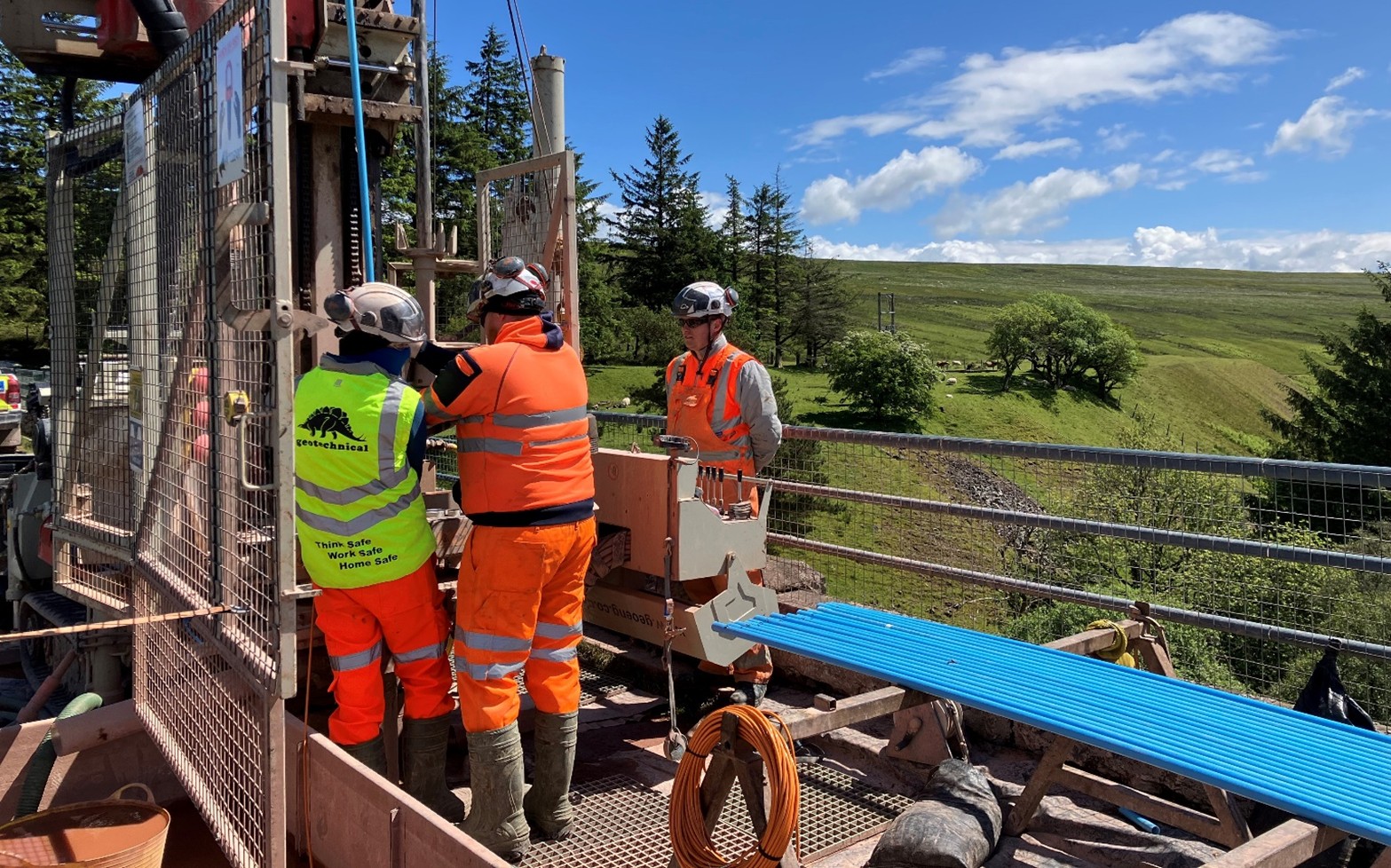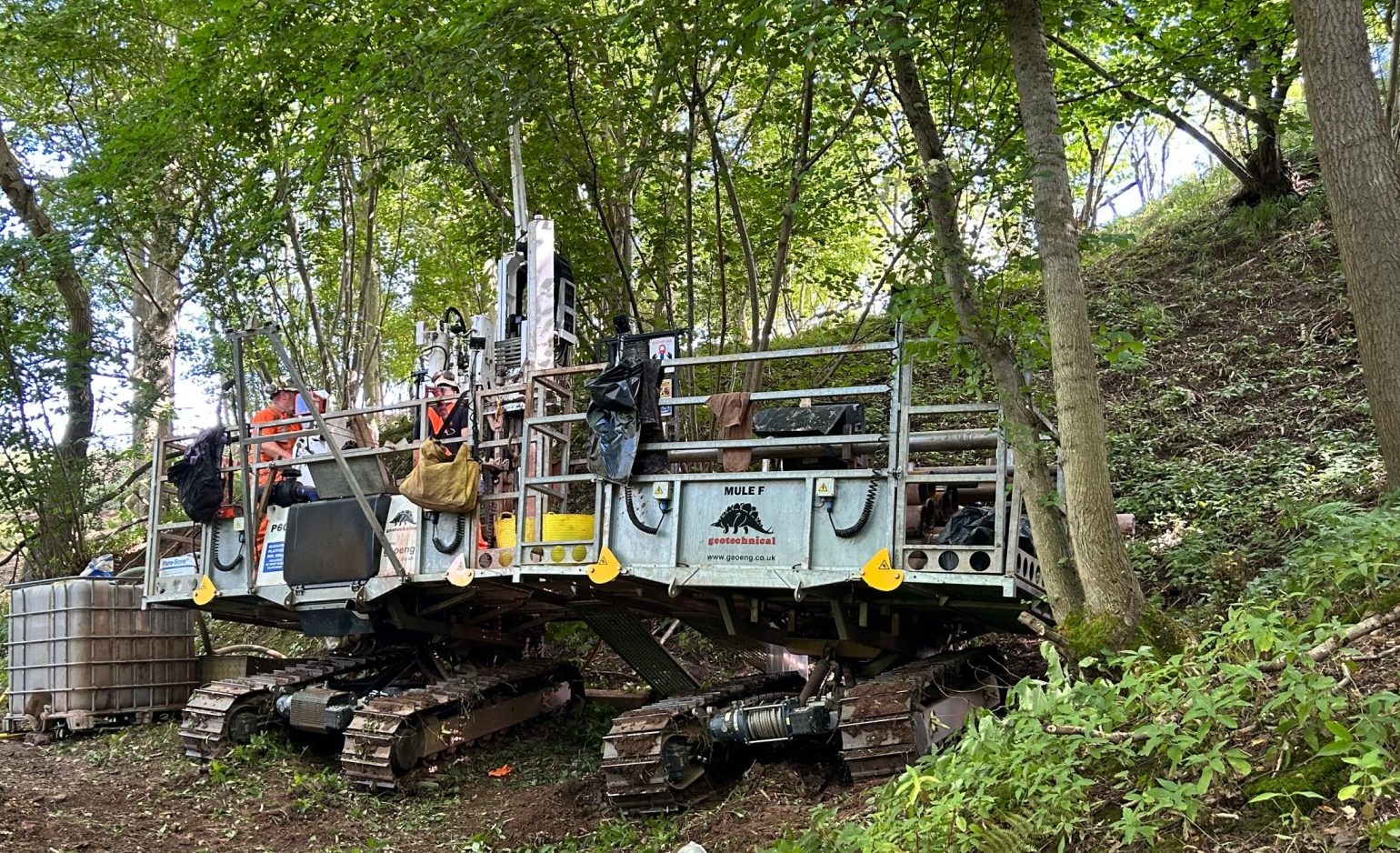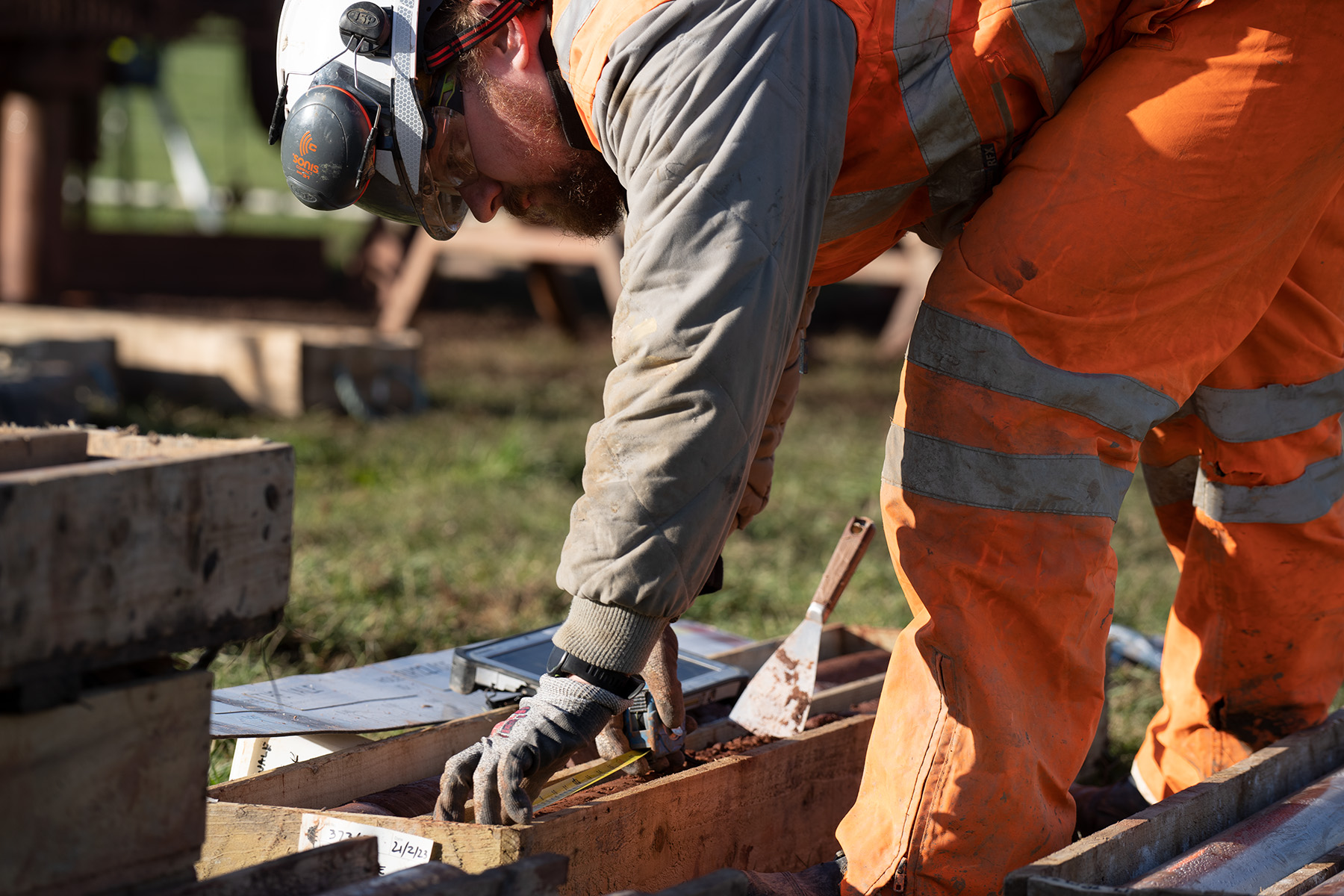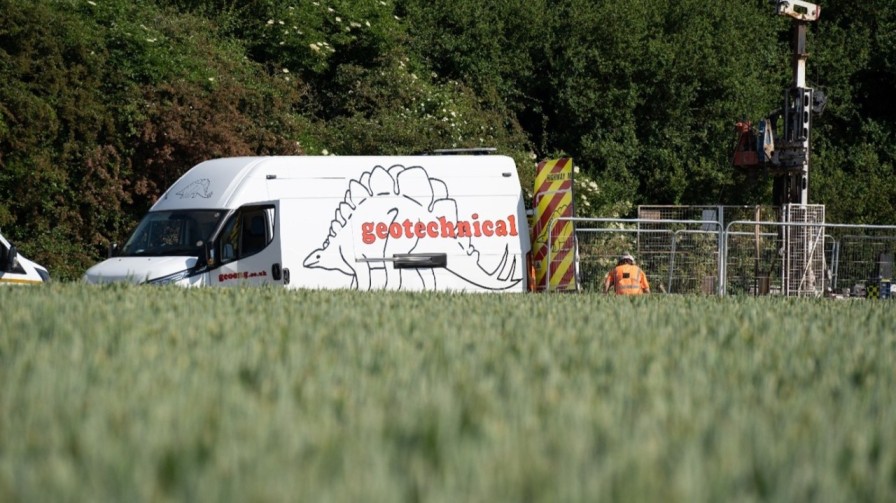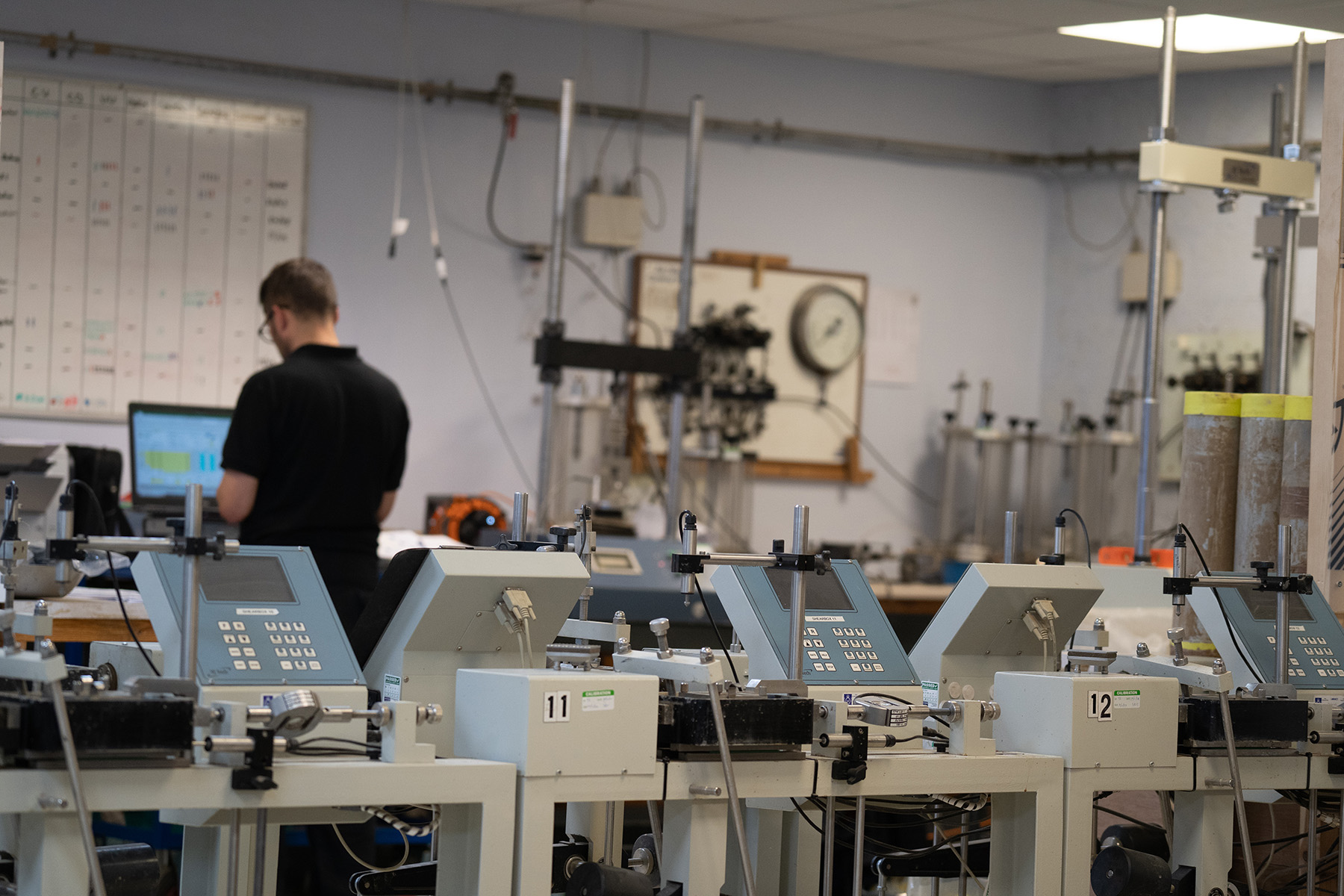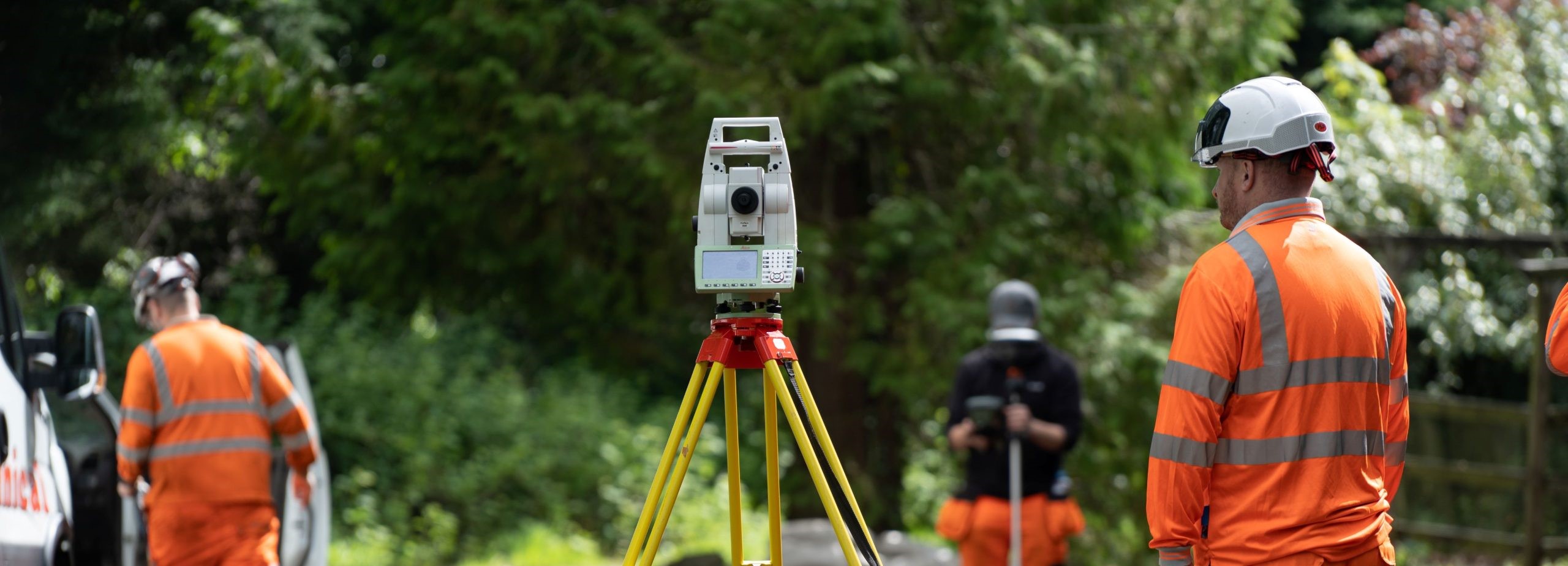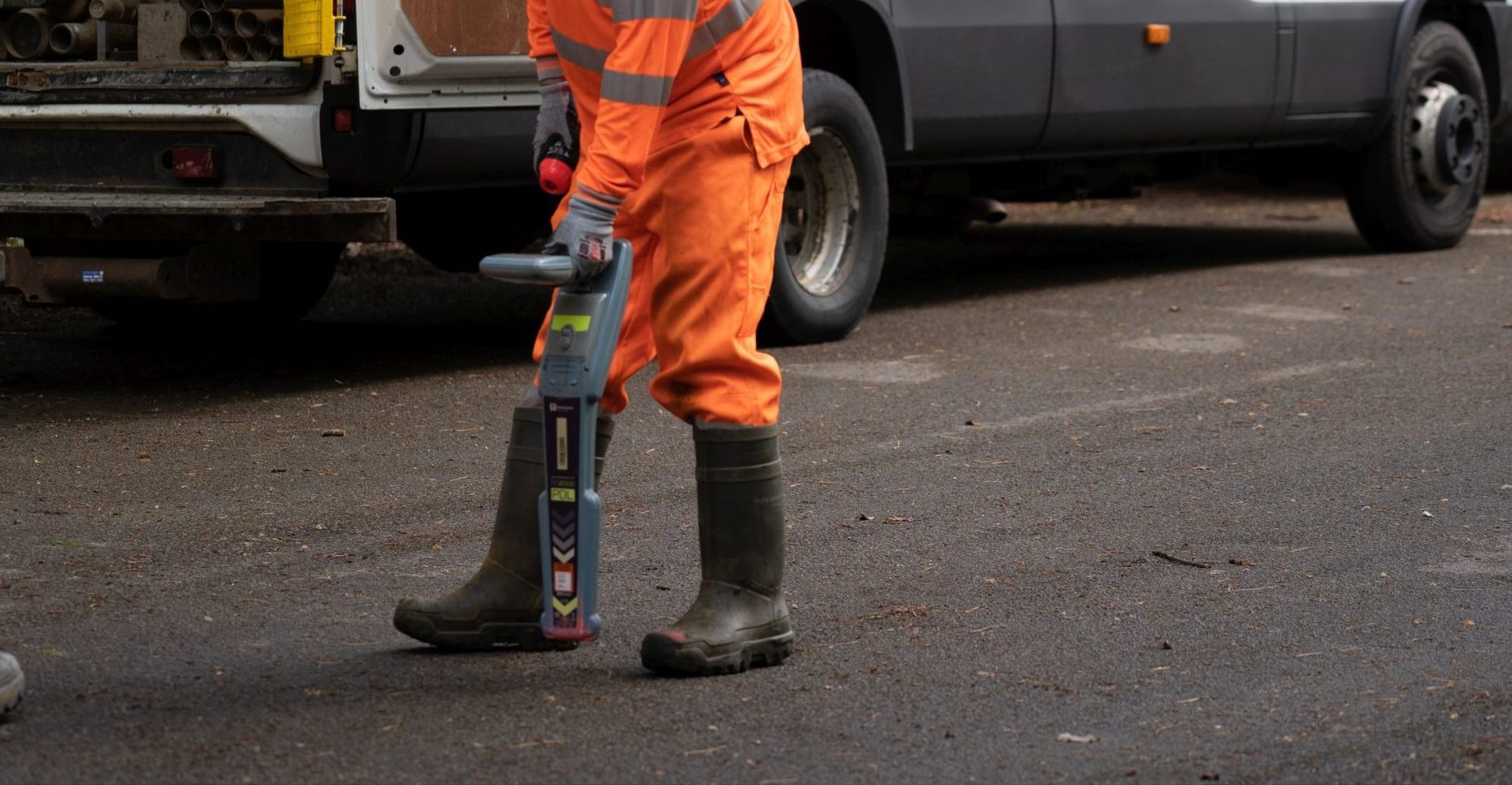Hengistbury Head Long Groyne GI
Offering logistical solutions in a complex coastal environment
Client: Bournemouth Christchurch and Poole (BCP) Council Principal Contractor: Lankelma Timeframe: 3 weeks Location: Hengistbury Head, Bournemouth
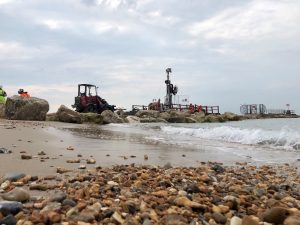 THE PROJECT
THE PROJECT
The Hengistbury Head Long Groyne is the largest and oldest of several groynes within Poole and Christchurch Bay which serves as the main defence against coastal erosion in the region.
Since its construction in the 1930s, the Long Groyne has withstood significant damage and undergone several phases of regeneration to maintain its function. It is predicted if the groyne were to fail, the Hengistbury Head beach would erode within a year. Unfortunately, in recent years, the groyne has been closed off from public use, with the structure becoming too unstable and unsafe for access.
Geotechnical Engineering were appointed to undertake the on-land aspect of the ground investigation, sharing extensive industry experience and knowledge to facilitate rotary drilling in such a logistically and unpredictable environment.
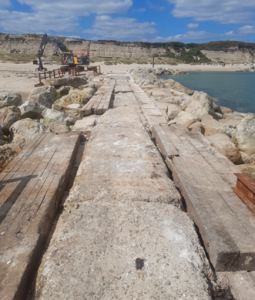 THE CHALLENGE
THE CHALLENGE
It was identified during the planning stage of the works that, at high tide, the groyne was overtopped. To minimise non-productive time during the investigation, it was key to determine the best time to complete the works. It was also identified that undertaking drilling works in such an environment would pose a significant environmental threat should any spills or equipment malfunctions occur.
THE SOLUTION
Periods of neap tides were identified during the proposed fieldwork duration, which provided an opportunity where the likelihood overtopping was low. The works were undertaken solely within these periods. Tides and weather conditions were assessed during the fieldworks using our dynamic risk assessment procedures. Additional measures such as provision of life vests, flotation devices and defined emergency egress routes were delineated. The work area was protected by permanent barriers, installed solely for the investigation as an additional mitigation measure.
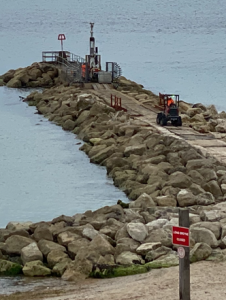 To mitigate the risk of pollution events, all hydraulic plant and equipment utilised within the intertidal zone used biodegradable hydraulic oil, as well as environmentally friendly drilling additives, in line with CEFAS/EA guidance and the OSPAR PLONOR list of substances. Vegetable based grease was used for lubricating drilling plant and equipment during the works. Drilling equipment was set up with spill mats in place, with additional absorbent pads, booms and granules available. A contingency plan was developed in case of plant break down on the groyne and the rig required towing; a tracked telehandler was stationed on site for the duration of the fieldworks. All spent drilling flush was collected with a wet vacuum from the bunded drilling area and transferred to IBCs to remove the risk of silt contamination into open water. These mitigation measures, combined with our robust daily equipment check and 13-week plant inspections ensured the works were completed without environmental incident.
To mitigate the risk of pollution events, all hydraulic plant and equipment utilised within the intertidal zone used biodegradable hydraulic oil, as well as environmentally friendly drilling additives, in line with CEFAS/EA guidance and the OSPAR PLONOR list of substances. Vegetable based grease was used for lubricating drilling plant and equipment during the works. Drilling equipment was set up with spill mats in place, with additional absorbent pads, booms and granules available. A contingency plan was developed in case of plant break down on the groyne and the rig required towing; a tracked telehandler was stationed on site for the duration of the fieldworks. All spent drilling flush was collected with a wet vacuum from the bunded drilling area and transferred to IBCs to remove the risk of silt contamination into open water. These mitigation measures, combined with our robust daily equipment check and 13-week plant inspections ensured the works were completed without environmental incident.
